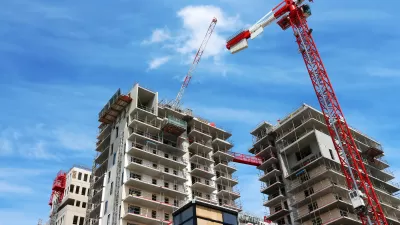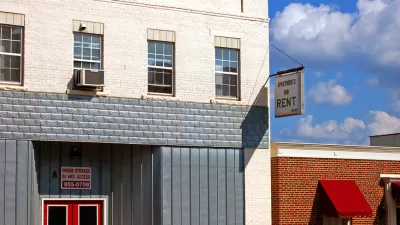Applied to roads, the theory of induced demand says new construction only brings out more users. But can something similar be said of housing? According to this research, the likely answer is no.

Pointing to an upcoming paper studying whether new luxury housing raises rents, Joe Cortright makes a case that induced demand theories for housing may be off-base. "The induced demand theory applied to housing," he writes, "is that building new housing somehow signals a big change in the neighborhood's amenities and livability and the new supply of housing triggers an even bigger increase in demand."
But while induced demand has been shown to apply to highway construction, a key difference between roads and housing is that road users pay a "zero price" to use the amenity. "Thus capacity (and willingness to tolerate delay) are the only things regulating demand, and when capacity is expanded, demand responds quickly," Cortright writes. The case is different for housing, which users pay a premium for. "When you actually price new capacity at even a fraction of its cost, demand evaporates."
Cortright discusses the paper's findings, which show depressed rents in buildings immediately surrounding new construction, drawing on data from 100 apartment buildings in 11 cities. The results appear to support the supply side theory and cast doubt on induced demand.
FULL STORY: Another housing myth debunked: Neighborhood price effects of new apartments

Planetizen Federal Action Tracker
A weekly monitor of how Trump’s orders and actions are impacting planners and planning in America.

Map: Where Senate Republicans Want to Sell Your Public Lands
For public land advocates, the Senate Republicans’ proposal to sell millions of acres of public land in the West is “the biggest fight of their careers.”

Restaurant Patios Were a Pandemic Win — Why Were They so Hard to Keep?
Social distancing requirements and changes in travel patterns prompted cities to pilot new uses for street and sidewalk space. Then it got complicated.

Platform Pilsner: Vancouver Transit Agency Releases... a Beer?
TransLink will receive a portion of every sale of the four-pack.

Toronto Weighs Cheaper Transit, Parking Hikes for Major Events
Special event rates would take effect during large festivals, sports games and concerts to ‘discourage driving, manage congestion and free up space for transit.”

Berlin to Consider Car-Free Zone Larger Than Manhattan
The area bound by the 22-mile Ringbahn would still allow 12 uses of a private automobile per year per person, and several other exemptions.
Urban Design for Planners 1: Software Tools
This six-course series explores essential urban design concepts using open source software and equips planners with the tools they need to participate fully in the urban design process.
Planning for Universal Design
Learn the tools for implementing Universal Design in planning regulations.
Heyer Gruel & Associates PA
JM Goldson LLC
Custer County Colorado
City of Camden Redevelopment Agency
City of Astoria
Transportation Research & Education Center (TREC) at Portland State University
Camden Redevelopment Agency
City of Claremont
Municipality of Princeton (NJ)





























